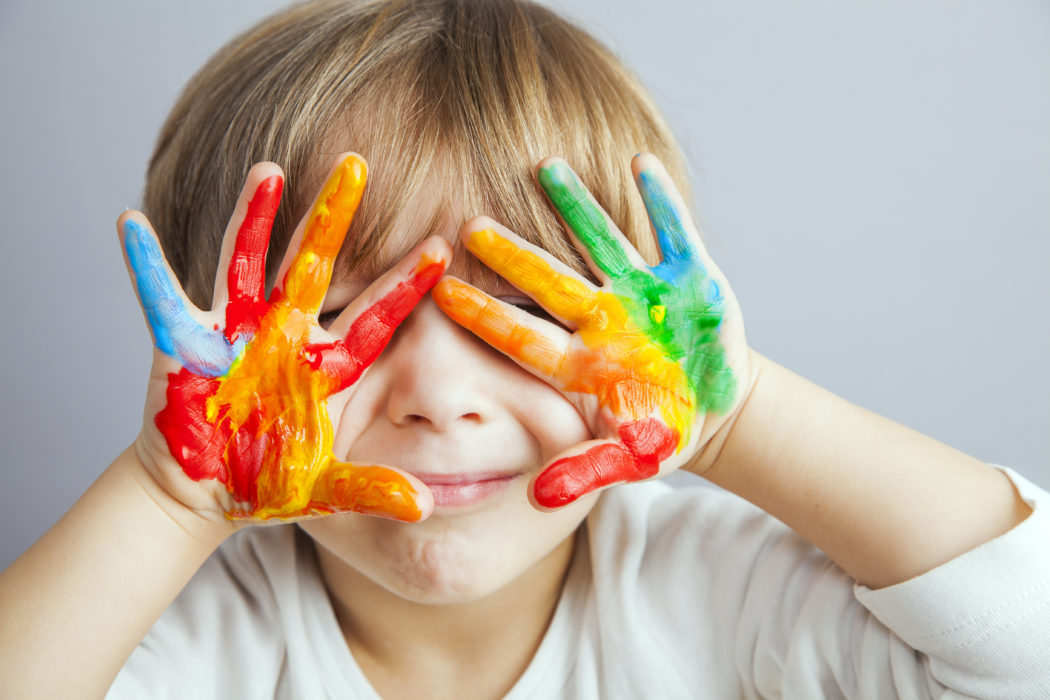Getting messy with paint, colouring, and putting glitter (on just about anything) are just a few arty activities that most children love. It’s fun to see our children immersed in creative activities, enjoying their time, and making something they can be proud of.
Did you know that art activities are of enormous long-term benefit to your children? They help develop a huge range of skills that go way beyond pencil grip and colour mixing. Art is vital for child development: This is why you’ll find it features so prominently in the nursery curriculum for babies and young children.
Here are some of the most interesting ways art helps child development:
- Art Aids in Sensory Development
When children get messy during their art activities, this is a good thing. Playing with different materials like wet paint, sticky glue, and crinkly paper gives them a chance to explore different textures, sights, sounds, and smells. This is often referred to as sensory play.
Sensory stimulation is very important for children. From birth and beyond, a baby learns about the world by exploring through his senses: touch, taste, hearing, seeing and smelling. Plentiful sensory stimulation is a must for brain development.
When any of the senses is stimulated, a signal is sent to the brain. In babies and children, these sensory signals create new and strengthen existing vital neural pathways around the brain. When a child is young, the brain is rapidly forming its neural pathways. In young adulthood, the pathways begin to solidify and set.
This is the reason why children often seem to learn so much faster than adults. Encouraging the development of neural pathways through sensory play is critical because it will help enormously with your child’s learning right through life.
2. Art helps build communication skills
For children who are not yet verbal, art is a channel that they can use to communicate through their choices of color and materials. For children becoming increasingly verbal, art still offers them a chance to articulate ideas and feelings they may struggle to find the words for. The action of creating a picture or model helps them explore and process feelings, big and small. Talking to your child about their creation helps them with language development, too.
3. Art promotes creativity and problem-solving skills
Creativity is a powerful thing. It allows people to innovate and be original, which can, in turn, help them overcome problems. Encouraging children and praising them in their efforts to be creative gives them confidence in their own creativity. When children are encouraged to explore different ways of doing things, they may apply this confidence to other situations in education and in life. This will help produce the next generation of problem solvers and nurture future leaders.
4. Art develops coordination
When little children get creative, they’re really working on their fine motor skills and coordination. Drawing with pens and pencils, controlling a paintbrush, pushing a glue stick, rolling clay and cutting with scissors are all helping the muscles in their tiny hands and arms get stronger and their hand-eye coordination to improve. The more they do these things, the better. It will help them enormously as they prepare to write and draw in school.
5. Art builds connections with others
All across the world and all throughout history, art has always been a common ground that helped connect people and communities- art helps us understand other people. Sharing artwork helps your child communicate non-verbally and thus helps build connections with other people. And it works in reverse too. By viewing the artwork of others, your child is exposed to new perspectives, helping them build friendships and empathy with other children.
How you can help:
Encouraging art at home is valuable to your child’s education and future. If this sounds daunting, remember the aim is not to create the next Picasso or Rembrandt, but just to encourage their interest in making art. It’s the process of making art that is important, not the finished results.
Here are a few things you can do:
● Create a permanent art area in your home where your child can freely access creative materials like crayons, paper, glue, clay, and other age-appropriate items. This needs to be a place where mess or spillages won’t matter so your child is free to experiment. Keep the art area well-stocked with good quality art supplies.
● Get involved and create art alongside or with your child. Show them art is fun and that you’re not afraid to experiment or get things ‘wrong’. As Albert Einstein said, ‘Creativity is contagious, pass it on.’
● Look at art together by going to local galleries or poring through art books. You can probably find some great art books just for children in your local library or bookstore. ● Look out for and encourage your child’s interest in art or craft programs in or after school, or in your local area.
But, above all, the most important thing your child needs from you to create art is the time, space, and opportunities to do it, and plenty of encouragement.
AUTHOR BIO
Ayesha Hoda is a marketing and communications specialist working at Step By Step Nursery Group in the UAE. She holds an MBA degree from a leading business school in Pakistan and has more than 13 years of experience in corporate communications and journalism. She has worked in both agency and client-side roles, designing communication strategies for multinational clients, nonprofits and small businesses in various industries, such as education and healthcare.
.
.
.

No Comments